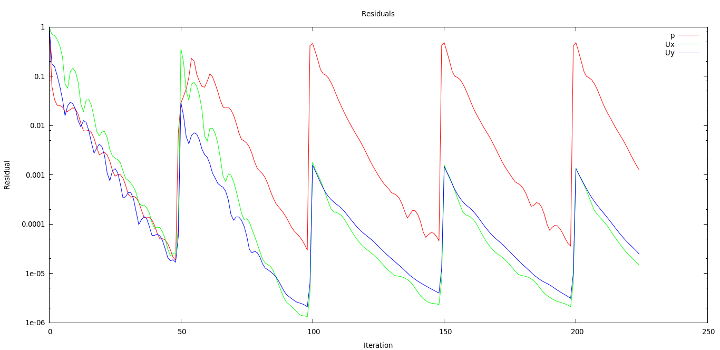I have a question regarding the transient algorithm.
I noticed that the size of the time steps for the solver does not matter. The solver calculates with another delta t
.......
.......
smoothSolver: Solving for omega, Initial residual = 0.004410836, Final residual = 7.8808988e-009, No Iterations 17
smoothSolver: Solving for k, Initial residual = 0.16740384, Final residual = 8.6197292e-009, No Iterations 37
ExecutionTime = 121.62 s ClockTime = 122 s
Courant Number mean: 0.20074245 max: 5.0545416
deltaT = 0.00027325827
Time = 0.00108677
PIMPLE: iteration 1
smoothSolver: Solving for Ux, Initial residual = 0.00016858864, Final residual = 1.5728663e-005, No Iterations 1
.......
should't delta t match the specified time step (in this case 0.05s) and should the graph of the residuals not look like this?

case 3b [https://openfoamwiki.net/index.php/Open ... n_OpenFOAM]
